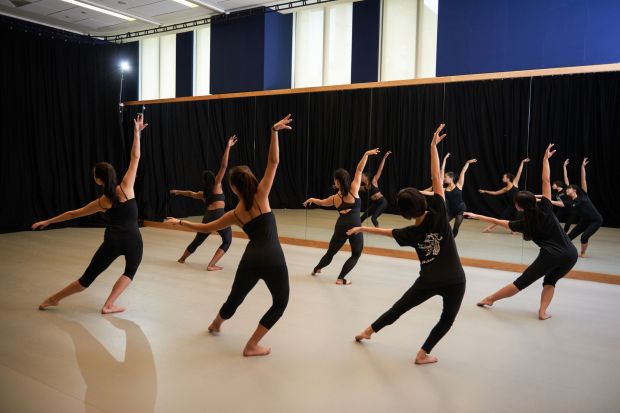Travel broadens the mind.
That’s what we tell our students when we encourage them to engage with international internships and study abroad. The ability to navigate a range of social, cultural and intellectual settings will be of great importance, so you ought to get some practice.
The same could perhaps also apply to middle-aged professors and centuries-old institutions. I’ve been testing this proposition for the past three years, having relocated from New Haven, Connecticut, to Singapore to participate in the founding of Yale-NUS College, a new residential liberal arts college.
By this author: does an academic start-up live up to expectations?
In a few months, I’ll be heading back to the warm embrace of what may be the safest job on earth – a tenured professorship at a formidably well-endowed private university. So I’ve been trying to articulate what I’ve gotten out of the experience and what new perspectives I might bring back to my starting point.
There are many specific things one could point to. We will be discussing these with colleagues from Yale and elsewhere at an upcoming workshop on Globalizing the Liberal Arts. Topics under discussion will include developing a global curriculum; interdisciplinary courses and majors; experiential learning; and the special challenges faced by a multinational faculty and student body.
All of these topics, and more, have been fascinating and rewarding to explore in a context so different from what I am used to, and have generated programmes and approaches that I would never otherwise have encountered. But the most important difference, and the most heartening, is one of attitude.
The project of liberal arts education is embattled in the West.
Shrinking resources, anti-intellectual politicians and public figures, a society fixated on celebrity and finance, a culture of ever more inward-focused tribalism, communication devices and media content specifically designed to reduce attention spans – all of these threaten the ancient goals of learning, and the combination leads to a sense of crisis. It’s hard to turn around without bumping into a book, conference, blog post, or Twitter account devoted to the ongoing crisis of the liberal arts.
But it doesn’t feel that way in Asia.
Every few days I have a conversation with someone who is trying to create a new liberal arts college or programme. In the past few weeks alone, my colleagues and I have talked to faculty and administrators from China, Japan, Myanmar and India, among many others, all of whom are engaged in generating and expanding opportunities in liberal arts education.
These are exciting conversations, filled with a kind of hope and optimism that seems to be in short supply in other parts of the world.
This enthusiasm is not confined to the academic world. As my colleague Trisha Craig has discussed, Asian political and business leaders recognise the importance of liberal arts education, and are sometimes more openly enthusiastic about it than a Western university president would dare to be. This positive attitude has only begun to seep down into the population at large, but the possibility of a home-based version of an education that many students have previously sought abroad is a welcome option for many families.
There are daunting obstacles and constraints of course, some resources-based, some political, some linguistic and cultural. But in Asia, the liberal arts is an expanding universe, just as colleges and universities in the US were in the late 19th century or in the decades following the Second World War.
I recall creating an advertisement a few years back that announced our intention to fill more than 100 tenure-track positions across the arts and sciences, an effort now largely completed. This advert generated comments, precisely because it so directly countered the current narrative of disappearing jobs and support for the liberal arts. One institution in a country with a population of 5 million won’t change that dynamic, but dozens of such institutions in a region with billions of inhabitants might.
This past semester, our students put on a wonderful production of Hamlet, superior in some ways to any of the half-dozen professional performances I’ve seen. It was done with virtually no “adult supervision” – to many of the faculty and staff it seemed to spring out of nowhere. And most of the young artistic directors, cast, and crew had been born and raised thousands of miles away from England and Denmark, in lands that Shakespeare never knew existed.
As I watched the drama unfold, the metaphor was inescapable – as with Shakespeare, so with the liberal arts more generally. The strength of the enterprise cannot be confined, and it will thrive and blossom in unexpected places.
So the news I bring back is that the liberal arts is not in retreat. Not if one takes a global perspective.
We may be losing battles in some American states, in some European countries. But in Asia, home to almost two-thirds of the world’s people, a movement has begun, that if nurtured and supported, will more than make up for whatever we lose elsewhere.
Charles Bailyn is dean of Faculty, Yale-NUS College, and A. Bartlett Giamatti professor of astronomy and physics at Yale University.
Write for us
If you are interested in blogging for us, please email chris.parr@tesglobal.com
Register to continue
Why register?
- Registration is free and only takes a moment
- Once registered, you can read 3 articles a month
- Sign up for our newsletter
Subscribe
Or subscribe for unlimited access to:
- Unlimited access to news, views, insights & reviews
- Digital editions
- Digital access to THE’s university and college rankings analysis
Already registered or a current subscriber? Login








